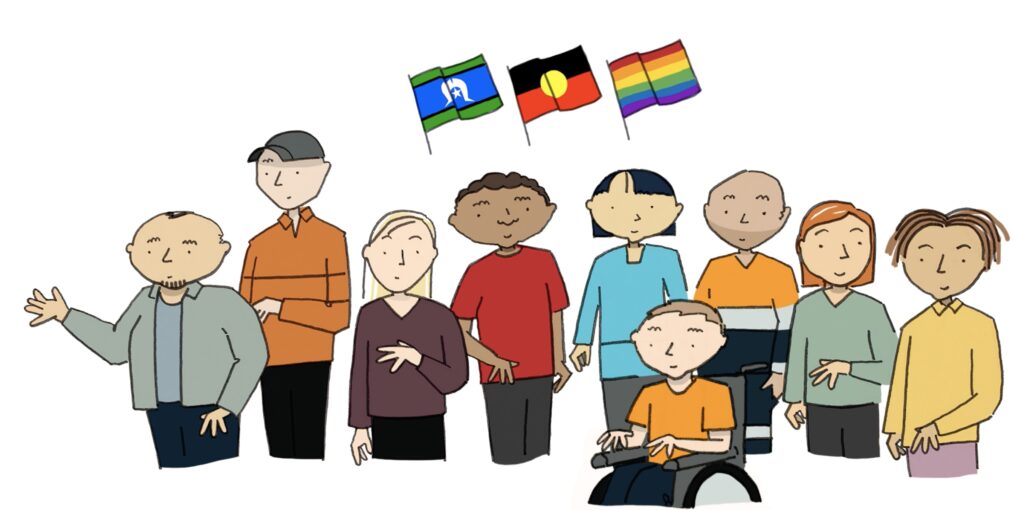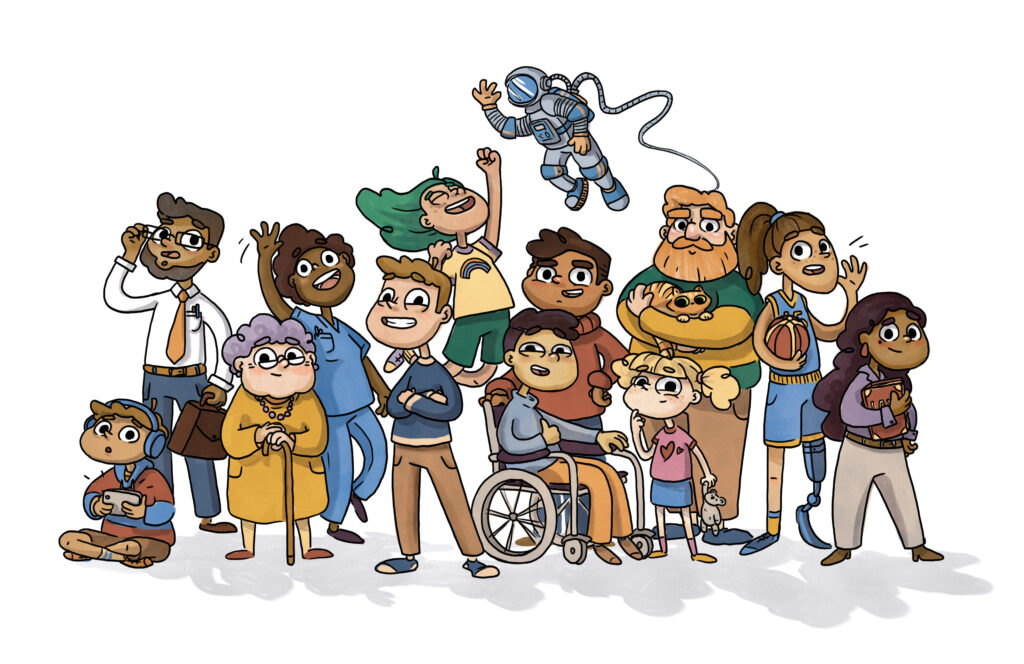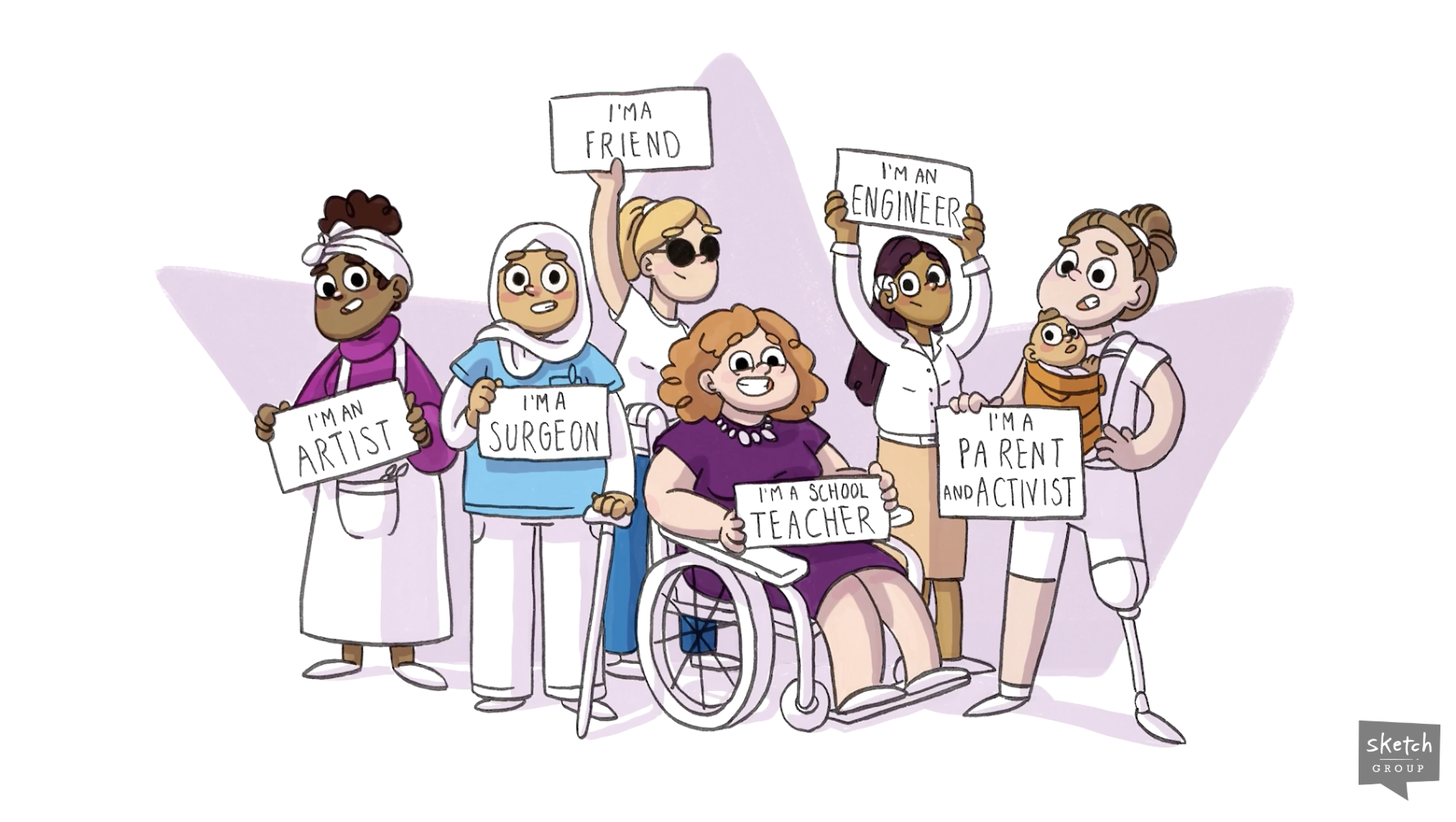When we talk about diversity, equity, and inclusion (DEI), we often focus on representation, policy, or language. But there’s another, often-overlooked dimension: how we communicate ideas. Visual communication — and sketching in particular — has a unique ability to bridge divides, give voice to underrepresented perspectives, and make inclusion visible.
At Sketch Group, we’ve noticed that our work often finds its way into DEI contexts — from First Nations co-design sessions to community consultations and accessibility programs. And it’s not hard to see why.
A Visual Language That Reflects Many Ways of Knowing
Recently, an Aboriginal woman who had been a client shared something that stayed with me. She told me that the live sketching we’d done during her workshops gave her and her people dignity and grace. She said it felt natural — that it was “how us mob learn.” And she wished graphic recording could be the norm in all the conversations she attends.
In many Indigenous cultures, knowledge isn’t passed down through dense written reports or bullet-pointed presentations — it’s shared through story, listening, and connection. Visual storytelling fits seamlessly into that tradition. It doesn’t impose; it reflects. It’s relational, responsive, and human.

Drawing Diversity, Literally and Figuratively
When we sketch, we have the opportunity to show diversity — age, culture, disability, gender, identity — in ways that words alone can’t. Inclusive visuals send a powerful message: you belong here.
But inclusive sketching goes deeper than representation. It’s not just who is drawn, but what stories are honoured. It’s the choice to draw the elder’s wisdom alongside the young person’s idea, the interpreter’s insight alongside the CEO’s perspective. It’s the act of making all voices visible — not just the loudest ones.
The Beauty of the Hand-Drawn
Hand-drawn sketches carry warmth and humility. The imperfect lines and visible brushstrokes signal that the work is still forming — that others are invited to shape it. In DEI work, where sensitivity and collaboration are vital, that sense of openness is incredibly powerful.
Unlike polished infographics or corporate decks, live sketches say: “This is a work in progress, and your voice matters.” That tone creates psychological safety — a space where people feel comfortable contributing, questioning, and building together.

A Bridge Across Language and Culture
Sketching transcends spoken language. In multicultural or multilingual environments, visuals become a shared language, making conversations accessible to everyone — including those less confident in English or formal settings.
A skilled live sketcher doesn’t just capture content; they listen visually. Each drawing becomes an act of empathy — proof that someone’s story was heard and valued. That alone can change the energy in a room.
Equity Through Visibility
Equity is about creating the conditions for everyone to participate fully. Visual communication does exactly that. For people who think or process information visually, or who struggle to engage with long text-heavy documents, sketches level the playing field. When used intentionally, sketching can elevate underrepresented voices and ensure they’re remembered long after the workshop ends. It literally draws attention to perspectives that might otherwise go unseen.
Final Reflection
Sketching and DEI share a simple, profound belief: that everyone deserves to be seen and heard.
When we draw together, we don’t just make ideas visible — we make people visible.

